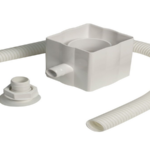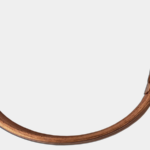Installing a gutter properly is a critical part of keeping your home in good repair and free from water damage. Gutters channel water away from your home, preventing it from seeping into your foundation or causing other problems. Follow these steps to ensure that your gutters are installed correctly.
- Measure the length of your home’s eaves. This will determine how much gutter you will need to purchase.
- Purchase the necessary amount of gutter, as well as any hangers or other hardware you will need.
- Install the hangers on your home’s eaves, following the manufacturer’s instructions.
- Cut the gutter to the correct length, using a hacksaw.
- Join the pieces of gutter together, using the manufacturer’s recommended method.
- Hang the gutter on the hangers, following the manufacturer’s instructions.
- Secure the gutter in place, using the recommended hardware.
- Install any end caps or other finishing touches, as desired.
How do you tell if gutters are installed correctly?
1) Check to see if the gutters are level. They should be installed so that they slope slightly towards the downspout, in order to encourage water to flow towards it.
2) Make sure that the gutters are properly secured to the fascia board. They should be screwed or bolted in place, and should not be able to be pulled away from the house easily.
3) Inspect the inside of the gutters to ensure that there are no gaps or leaks. Water should be able to flow freely through the gutters without leaking out.
4) Finally, check the downspouts to ensure that they are properly attached and are not blocked. Downspouts should be installed so that water can flow freely out of them, and should be clear of any debris.
What is the correct fall on a gutter?
A gutter is a type of drainage system that is installed along the edge of a roof. Its purpose is to collect and channel water away from the roof and foundation of a home or building to prevent water damage. The correct fall for a gutter is a minimum of 1/4 inch per foot. This means that for every foot of gutter, the end that is farthest away from the downspout should be 1/4 inch lower than the end that is closest to the downspout. This ensures that water will flow towards the downspout and away from the roof.
What is the rule of thumb for gutters?
There is no definitive answer to this question as it depends on a number of factors, such as the size and type of your home, the climate you live in, and the amount of leaves and debris that typically fall into your gutters. However, as a general rule of thumb, it is generally recommended that you clean your gutters at least twice a year – once in the spring and once in the fall.
What are some common mistakes that people make when installing gutters?
- One of the most common mistakes people make when installing gutters is not properly securing them to the home. This can lead to gutters coming loose and eventually falling off, which can cause serious damage to the home.
- Another common mistake is not properly installing the downspouts. This can cause water to back up in the gutters and eventually overflow, causing damage to the home’s foundation or landscaping.
- Another mistake is not cleaning the gutters regularly. This can cause leaves and other debris to build up, which can eventually clog the gutters and cause water to overflow.
- Finally, some people make the mistake of not properly securing the gutters during severe weather. This can cause the gutters to be torn off by high winds, which can cause serious damage to the home.
What should you not do when installing gutters?
There are a few things you shouldn’t do when installing gutters. First, you shouldn’t try to install gutters without any help. It’s always best to have at least one other person around to help you, especially if you’re not experienced in this sort of thing.
Second, you shouldn’t cut corners when it comes to the materials you use. This is a job that requires high-quality materials, so make sure you get the best gutters you can afford.
Third, you shouldn’t try to install gutters yourself if you don’t feel comfortable doing so. If you’re not confident in your abilities, it’s better to hire a professional to do the job for you.
Fourth, you shouldn’t neglect to clean your gutters once they’re installed. Gutters need to be cleaned on a regular basis in order to prevent build-up and clogging.
Finally, you shouldn’t forget to have your gutters inspected annually. This will help ensure that they’re in good condition and functioning properly.
Do you nail or screw gutters?
It really depends on the type of gutter you have as to whether you nail or screw it in place. If you have the older, wood gutters, then you will definitely want to use nails so that they grip the wood better. However, if you have the newer, vinyl gutters, then screws are the way to go because they will hold the vinyl in place better than nails will.
Final Word
If you follow these instructions, you should be able to install a gutter properly and keep it in good condition for years to come.
















